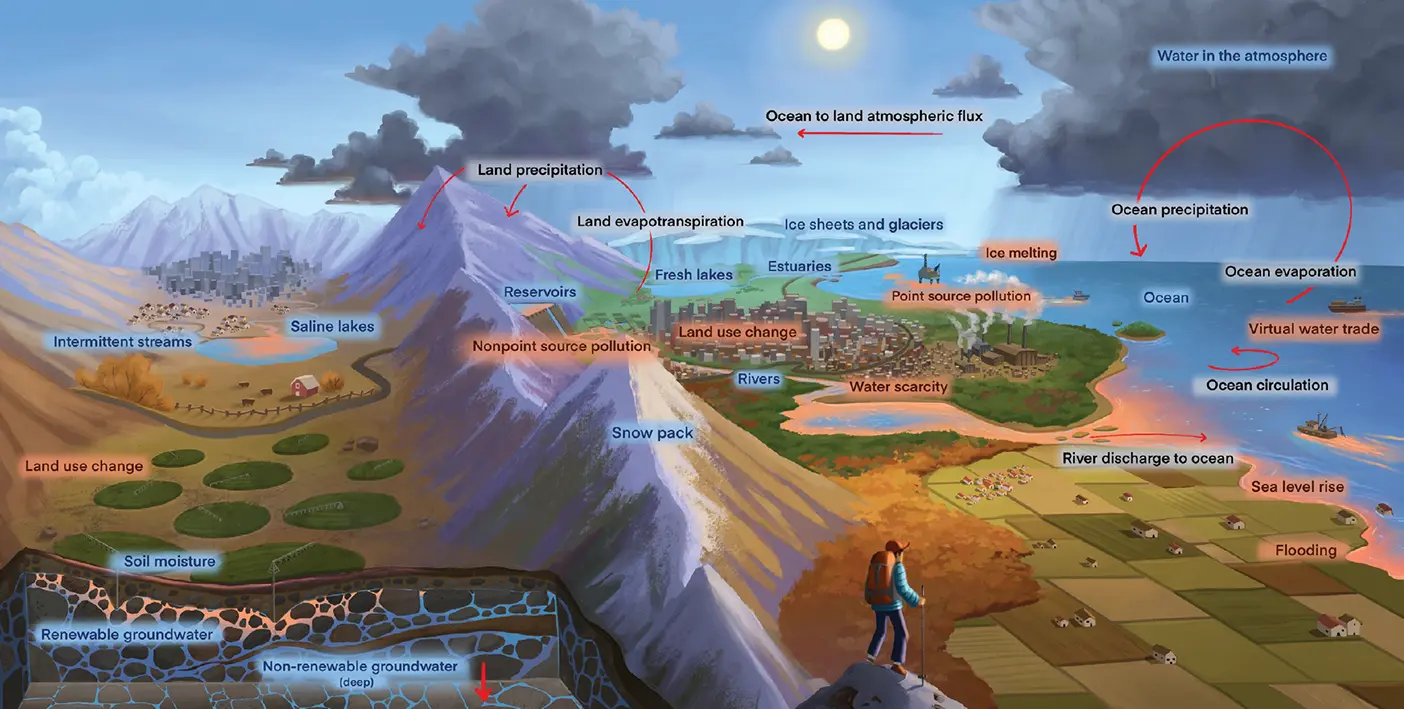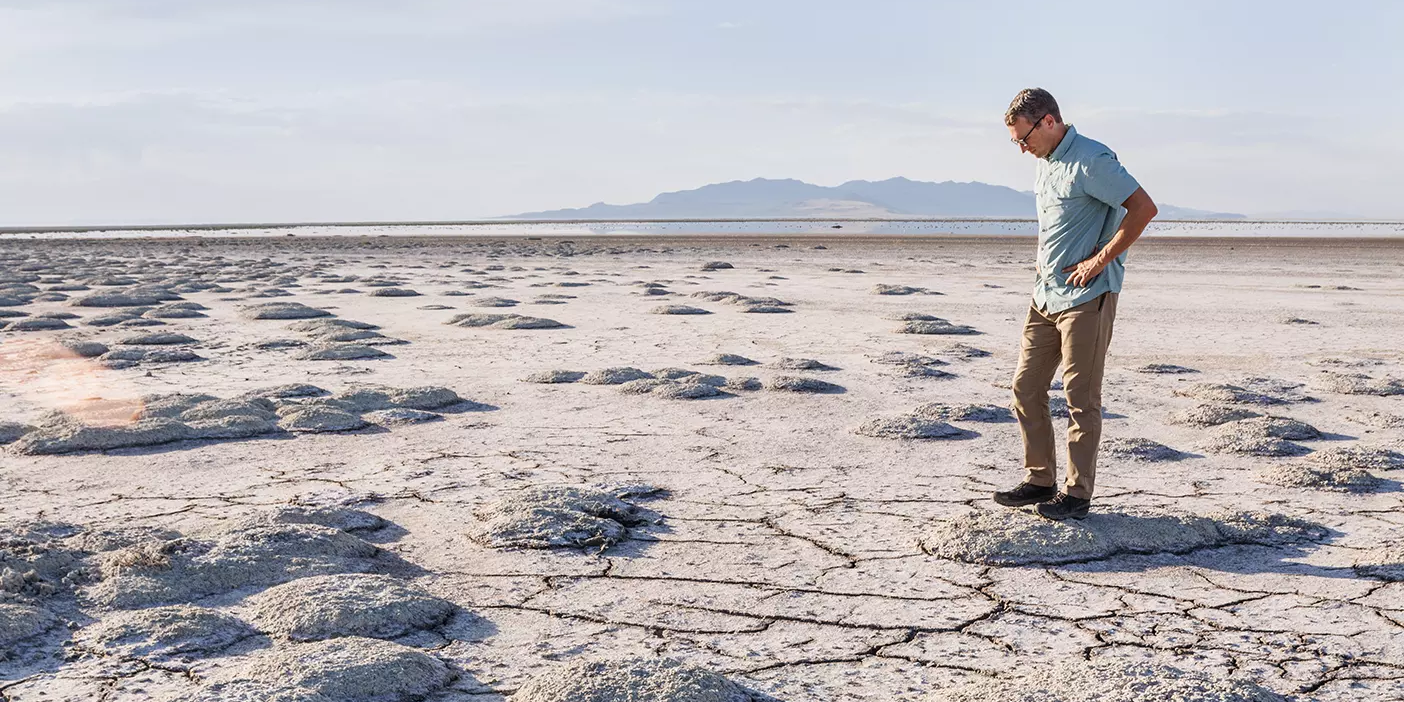“What are some things you’re noticing?” asks a sixth-grade teacher, a colorful, detailed diagram on the board behind him. Ryan S. Nixon (MA ’12), a BYU science-education professor who helped design the chart, observes carefully. A student shoots her arm into the air: “There’s a human!”

“Yes! This is what we’re trying to do!” Nixon remembers thinking. He was part of a team led by BYU life-sciences professor Benjamin W. Abbott to rethink the way the water cycle is taught in schools.
You may have seen the classic water-cycle diagram, depicting a pristine path through Earth’s systems, from precipitation to evaporation—but no people.
“We live in a geological time period that is dominated by humans,” says Abbott. “And so excluding humans from our ideas about water means that we actually get a lot of hydrological questions wrong.”
Abbott led a collaborative confluence of experts, from water engineers to illustrators, to create a new diagram of the water cycle—one that incorporates human influence on the Earth’s water flow. The final design appears in Nature Geoscience.
Nixon says a big part of his role was to translate the science into “something interesting and accessible to teachers, students, and the public.”
Sophie Woods Hill (BA ’09), a public-school teacher with a doctorate in stormwater management, brought a dual perspective that helped BYU undergraduates “develop the types of drawings and resources that would be useful or most applicable” to schoolteachers. “The undergraduates were. . . phenomenal. They really were the heart and soul of this effort.”
The updated water cycle was made official by the United States Geological Survey in 2023, and now a version of it is circulating through classrooms all across the country.
“I felt so privileged to work with everyone who participated in the program,” says Abbott. Though the contributors came from different institutions and faith backgrounds, they were “united in this desire to help one another be better caretakers of the Earth that we depend upon.”












